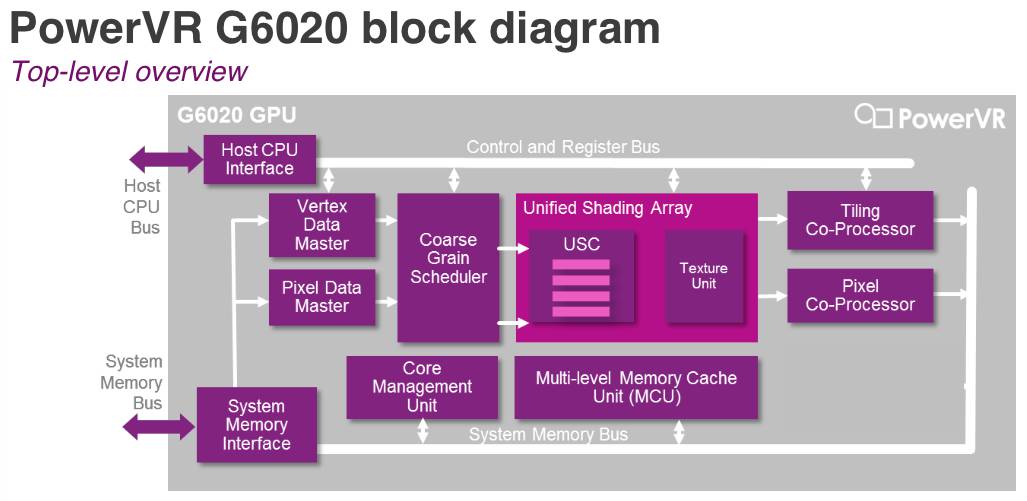This article is more than 1 year old
Just want a simple, low-power GPU for your smart-gumble? Try using your Imagination
Brains of your second wristputer
MWC 2015 Getting tired of chip designers bragging how their latest and greatest GPUs are stuffed full of transistors and can process a bazillion polygons a second? Well, Imagination has an antidote – the PowerVR G6020, which is aimed at smartwatches and embedded stuff where a slick 2D user interface is preferred over 3D might.
The 400MHz G6020 blueprints will be revealed at MWC 2015 today – and they are strictly blueprints; the designs aren't expected to appear in silicon for another 12 to 18 months. It is the smallest Series 6XE PowerVR GPU, taking up 2.2mm2 of die space when fabricated in a 28nm process.
It's aimed at gear that needs 60 frames-per-second on a 720p display or smaller: wearable gadgets, watches, internet-of-things with screens, and so on. It is fully OpenGL ES 3.0 compatible, we're told, but the emphasis is on 2D rather than 3D acceleration.
Imagination, its UK-based designer, says it's made a number of tweaks to tune the GPU design for smaller low-power hardware: for example, it compresses textures to squeeze out more bandwidth, it uses 16-bit floating-point math rather than 32-bit which saves on complexity, and it runs most of the GPU driver in the GPU – whatever low-end CPU is driving the graphics engine doesn't have to do much in the way of processing. Software running on the CPU fires "kick" commands at the GPU core, and lets it turn those into on-screen changes.
These sorts of techniques in the G6020 aren't unique to Imagination, but the Brit biz is rather pleased with the low-end core it's touting to system-on-chip manufacturers today. Its high-end PowerVR GPUs have found their way into the Apple iPhone 5S and 6, the iPad Air 2, and plenty of others.
"The G6020 is much more suited to rendering user interfaces and moving pixels around," Peter McGuinness, director of multimedia technology marketing at Imagination, told The Register.
"Games on these devices have a very 2D feel. The 16bit floating-point picks up the fill-rate performance in a much more energy-efficient way, and 720p is the largest resolution you'd expect on a device suited for a G6020. You can implement quite a sophisticated user interface on the screen with this."
Imagination has also, in time for MWC 2015, revealed PowerVR Series 5 video encoder core designs: the E5800 is aimed at camcorders and can process incoming 4K video at 60 FPS; the E5505 which is aimed at phones, home gear and other stuff that needs 4K at 30 FPS; and the E5300, which is designed for internet-of-things that need to do 1080p at 60 FPS – think wearables or little sensors with builtin cameras.
We'll publish more details later today. ®

